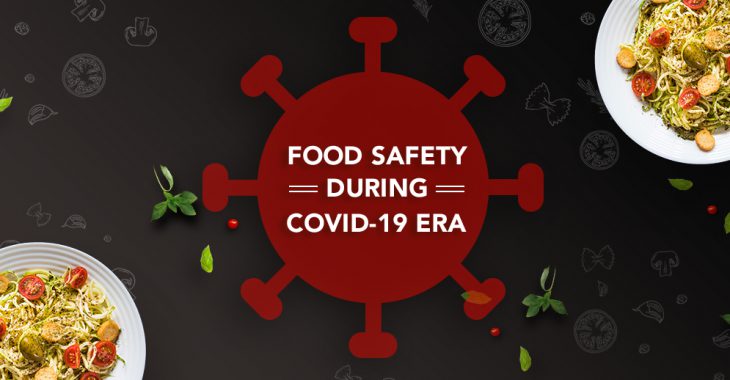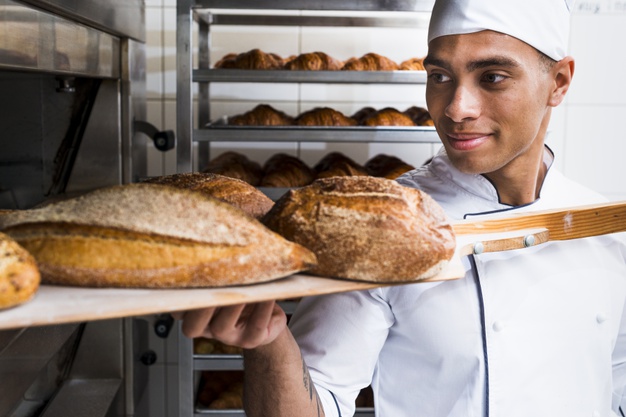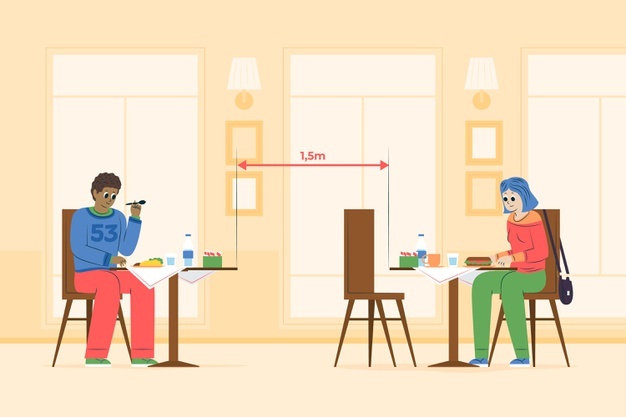Are You Following WHO Guidelines for Your Food Business amid COVID-19?

As the world is facing an unexampled threat from the COVID-19 epidemic, many countries and businesses are now following the safety guidelines from the World Health Organization (WHO).
The measures of physical distancing have been suggested to tackle the virus outburst leading several industries to either stop working or to work inside the boundaries of their homes. For some industries, working from home, teleworking and online discussion become very common, but the food industry does not have the privilege to work from home and are needed to continue to work in their usual workspaces like before.
Keeping all the employees in the food industry healthy and safe is vital in surviving the epidemic. The same is also required to maintain trust and confidence among the consumers in the safety and availability of food.
To prevent the exposure of the virus and boost hygiene and sanitation practices, are you practising the following WHO safety and social distance guidelines for your food business?
Food Workers: Awareness of COVID-19 Symptoms
WHO releases safety measures for the food workers who come directly in contact with open food as a part of their work. This implies to managers, waiters, cleaners, maintenance contractors, delivery workers and food inspectors. WHO recommends staff feeling unwell should stay at home and must understand the symptoms of COVID-19.
The food business owners should fill their staff with the knowledge about recognising the symptoms at the early stage and assist them with written guidelines on reporting such symptoms to seek appropriate medical help and testing to minimise the risk of virus.

Common symptoms of the COVID-19 are as follows:
● Fever (37.5-degree celsius or above)
● Cough (any cough, be it dry or wet)
● Tiredness
● Breathing difficulties
● Fatigue
Keeping the Virus Away from the Work Environment
Staff working surrounding food should be equipped with written instructions and training on how to keep their surroundings prevented from the novel coronavirus. Food workers, as a part of their FSMS (Food Safety Management System), should ensure that the infected and unwell employees are excluded from the food premises and are advised to stay at home and get tested. This is crucial because, in case, if the infected employee handles the food, could introduce the virus to the meals of your customers or onto the surfaces of the food or kitchen counter either by unintentional coughing, sneezing or via physical contact.

Moreover, in some cases, the infected person may not show any symptoms or may display very minor symptoms that can easily be overlooked, yet carrying the deadly virus within them. Thus, it is advised to the restaurant owners to provide their staff with appropriate PPE kits and teach them to practice personal hygiene.
Furthermore, a procedure should be established within the work premises for the staff to easily communicate about their health status to the higher authorities, to receive reliable information and be swiftly and safely executed from the premises to take appropriate medical help and stay at home until recovered.
Healthy hygienic practice includes:
● Hand hygiene – cleaning your hands for at least 20 seconds with soap and warm water.
● Respiratory hygiene -sheathing your mouth and nose with a tissue every time you cough or sneeze, disposal of tissues and hand wash.
● Frequently using alcohol-based hand sanitisers.
● Frequent disinfection of work surfaces and high contact areas at the premises.
● Discarding any contact with the person showing any virus symptoms.
Use of Disposable Gloves
Using gloves at the workplace might be in practice by the food workers but it is advised by WHO that gloves must be changed frequently and hands must be washed and sanitized in between the change to discard the contamination of any virus or bacteria on hands.
Moreover, food employees must avoid touching their eyes, mouth, nose and ears while working in the premises to protect themselves and their surroundings from the infection. Warm water and soap are appropriate for hand washing. Sanitizer can be adopted as an additional measure, but it should not replace the hand washing.
Gloves must also be changed after carrying non- food-oriented activities like opening and closing drawers, emptying bins, exchanging money with the customers.
Physical Distancing in the Work Environment
Physical distancing is one among those powerful shields protecting us from the COVID-19. Keeping a minimum 1.5 metres distance between two employees, or a customer and an employee can help humanity win over the pandemic. Where it seems quite difficult to practice physical distancing at times in such a food production environment, WHO suggested measures could make it possible, keeping everyone safe, if followed.

An Ultimate Guide to Keep Physical Distancing in Your Venue… Know more
● Arranging food workers in such a way they do not face one another. This can be done either by staggering workstations on either side of processing lines.
● Equip employees with high-quality PPE kits (face mask, hand sanitizer, disposable gloves, slip-resistant shoes etc.)
● Cutting down the menu items and limiting the staff at any point in time.
● Split food workers in shifts to reduce the interaction between the groups.
● Teach your employees to speak with the help of signs.
● Set the 1.5 metres distance between customers tables either by floor marking or by physical dividers like plastic curtains, cardboards etc. to avoid contact.
Transport, Storage and Delivery of Food Ingredients and Food Products
The virus enters your place only when either an infected person walks-in or contaminated products are brought into the premises. It is advised that the drivers and other product delivery staff should not step out of their vehicle during the delivery and must be supplied with the alcohol-based hand sanitizer and paper towels to disinfect their hands before handing over the delivery documents to the staff. The food and ingredients delivery companies must employ disposable containers while delivering the food to discard the need for cleaning of any return.
Staff Canteens
The supreme quality of public health measures for hand washing and respiratory protocol should be employed in the work canteens where there is no other practical alternative for staff working in the frontline services like food processing and food retailing to obtain food.
Following measures suggested by WHO during such circumstances:
● Practising 1.5 metres physical distance at the workplace (inclusive of seating arrangements)
● Restricting unessential contacts as much as possible.
● Insight notices and guidelines for promoting hand hygiene and physical distancing.
● Frequently disinfecting premises, high touch pints like countertop, drawers and doors handles, etc.
● Split the staff into shifts to minimise the chances of physical contact or communication.



